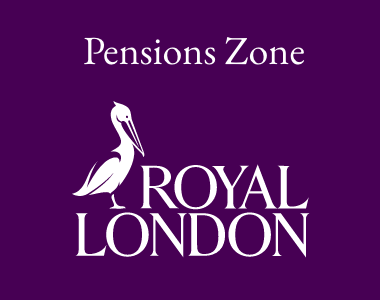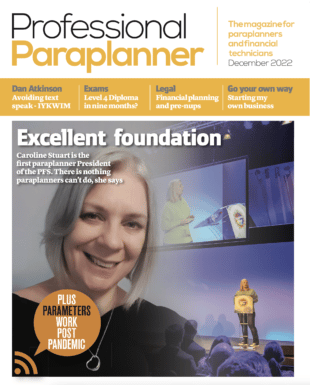The FCA has been asking advice firms to use the Defined Benefit Advice Assessment Tool – DBAAT – to assess suitability in relation to their DB activities. ATEB Consulting’s Paul Jay explains the process and how it fits with SM&CR.
Most firms will have at least vague recollections of the FSA’s thematic review of pension switching and the report it produced in December 2008.
It produced a flurry of activity, but as time has elapsed it has perhaps become a distant memory, despite the high volumes of replacement business that have been and continue to be transacted since.
Accompanying this was an Excel spreadsheet/switching template that the regulator had used when conducting the thematic review and many firms used this when checking advice files relating to pension switches. Perhaps some still do, but in our experience most do not.
The bulk of the template covered unsuitable outcomes and provided firms with several options which allowed them to assess whether they considered the advice to switch suitable or not, but caveated with ‘without good reason’. Of course, when most firms made their own assessment they were able to indignantly state that there were good reasons and what these were, but frequently without robust evidence to support their assertions.
Effectively, the template allowed firms to perform their own self-assessment of suitability and as ‘good reason’ had been found, the firm had effectively confirmed that everything was OK, so the template eventually became somewhat redundant.
So what does that have to do with now?
Well, fast forward ten plus years and it isn’t so much PP switching that’s on the radar (although it probably should be), but DB pensions.
ATEB is aware of several firms that have had recent contact from the FCA in relation to their DB activities. Much information was requested but this culminated in the firm being asked to use another FCA tool to assess suitability – the Defined Benefit Advice Assessment Tool – DBAAT.
Anyone familiar with DBAAT will know that its completion is not straightforward, especially as it’s supported by 104 pages of guidance, but ultimately firms completing the exercise themselves will still face similar (albeit more in-depth) questions covering the following:
• Was there sufficient information to assess suitability?
• Was the advice to transfer considered suitable?
• Was the investment advice suitable?
• Was disclosure completed correctly?
• Was the client insistent and was the correct process followed?
• Did the firm’s advice result in a transfer recommendation?
• What was the overall outcome?
Firms may well be able to state that in their view there were good reasons to transfer, that clients were motivated to do so and that the investment and disclosure aspects were all watertight, but this is where there could be a potential problem lurking for the unwary.
The DB scheme that has hit all the headlines is the British Steel Pension Scheme (BSPS) and the FCA has already taken numerous firms to task and continues to do so (typically the FCA has found 47% of BSPS cases unsuitable but this increases to 98% where cases escalate to the FOS), but we can easily see the regulator extending its approach across DB transfers generally – it uses supervisory tools to do this – and firms, and individuals holding Senior Manager Functions in particular, would be wise to be cognitive of CONRED Annex 4, under which new rules applied from 28 February.
These rules require personal attestations as follows:
I [name] of [firm] attest on [date] that:
(1) I have read the BSPS Consumer Redress Scheme rules in CONRED 4 and in particular the BSPS DBAAT instructions at CONRED 4 Annex 21R;
(2) I am approved to perform the SMF16 (Compliance oversight) FCA Controlled Function for the firm or [another appropriate senior management function] within the firm;
(3) I have reviewed the completed FCA DBAAT in light of the rules for the BSPS DBAAT referred to in (1);
(4) where applicable, the completed FCA DBAAT has been amended as a consequence of applying the rules referred to in (1);
(5) where the FCA DBAAT information section rating was ‘non-compliant – unclear’ or ‘non-compliant – proceed to suitability assessment’, the firm has taken the steps in CONRED 4.3.5R and has assessed the case in accordance with the rules, evidential provisions and guidance in CONRED 4.3.2.R to CONRED 4.3.4R, CONRED 4.4.12G and CONRED 4.3.1G (or took equivalent steps previously); and
(6) in my view, the firm would have come to the same conclusion (that the advice was suitable, unsuitable or a rating of ‘not-compliant – unclear’ (as applicable)) if it had used the BSPS DBAAT.
This is an attestation confirming that the DBAAT has been completed, checked and that firm agrees with the outcome. So in light of the statistics relating to suitability highlighted above, if the FCA does extend its reach beyond BSPS is anyone in a hurry to sign one of these?
Despite the SM&CR having identified relatively few individuals as having transgressed the rules, the regulator is requesting personal attestations increasingly frequently and it’s not just firms but individuals holding Senior Management Functions within them that will be held to account when things are found to be unacceptable.
If your firm has transacted DB transfer business don’t mark your own homework, get DBAATs checked externally. We’re dealing with firms right now who wish they had done so and despite the rear view mirror offering 20/20 vision, nobody is seeing benefit in being wise after the event.
[Main image: kelly-sikkema-SkFdmKGxQ44-unsplash]





























